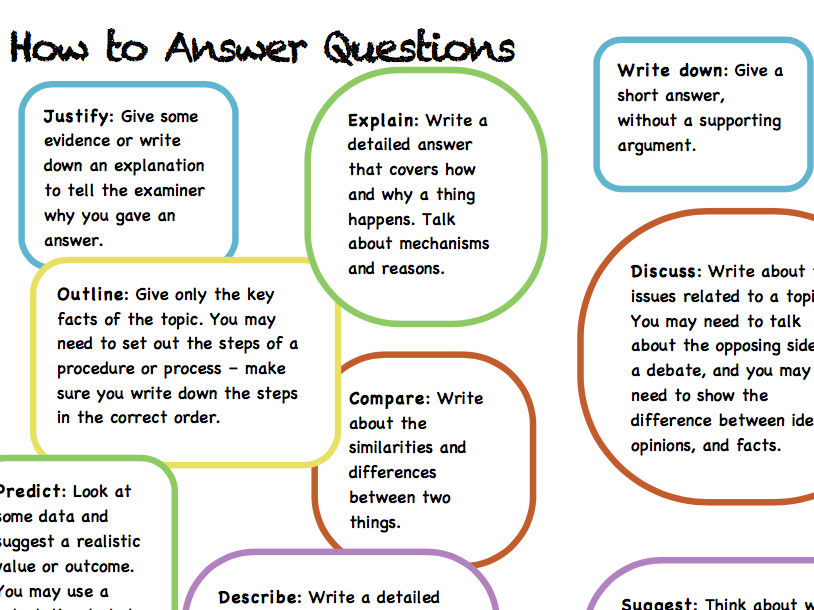
87Uploads
60k+Views
11k+Downloads
Biology
Bundle

How to's
A collection of help sheets to support students in answering questions, drawing and interpreting graphs, and planning scientific investigations.
I've laminated these and put them in a folder on my display board so that students can help themselves when they need more support.

How to plan an investigation / experiment in Science
A help sheet to tell students about how to plan a Scientific investigation or experiment.
I've laminated these, and put them in a folder on the display board so students can help themselves if they need additional support.

How to draw a graph Science help sheet
A help sheet to tell students about how to draw and interpret a graph.
I've laminated these, and put them in a folder on the display board so students can help themselves if they need additional support.

How to answer questions help sheet - science command words
A help sheet to tell students about command words used in Science questions.
I've laminated these, and put them in a folder on the display board so students can help themselves if they need additional support.

Practical Science Careers project
A series of 8 practical activities, put into the context of careers in Science. This is aimed at KS3 students, introducing some practical skills.
Aims of the project: To learn about some careers in Science, and to try some out. To develop investigation skills as required in the KS4 core practical’s included at GCSE.
Students get to experience being an Aerospace engineer by designing and testing paper planes, a Biochemist by testing urine samples, a Biomedical scientist by testing different anti bacterial soaps, a Chemical engineer by investigating recipes for bouncy balls, a Civil engineer by designing and testing bridges, a Forensic scientist by taking and analysing finger prints, a Mechanical engineer by making cotton reel motors, and a Pyrotechnic technician, by testing firework colours and making sparklers.
Each includes a job profile page to be filled out using the national careers service website to provide context for the lesson.
Also included is a handy technician guide.
This is designed to be handed out as a student booklet, with each career taking around 2 single hour lessons to complete, aimed at KS3 students. Students develop their investigation skills, as well as learning about some different careers in Science.

Bacteria growth worksheet
Students interpret some petri dish bacteria growth results. Gets students to think about why these are difficult to interpret and what we can learn from this kind of experiment.

Brain structure using an fMRI
Students read ‘medical notes’ on a patient after having an MRI scan, and use it to identify the parts of the brain.
This is to help students understand how MRIs are used to study the brain.

Silent debate questions on cloning and genetic testing
Print these on A3 paper. Place them round the room.
Students can visit each one, read what people have written, and write their own ideas and opinions down.
They make a great display when they're finished.

Inheriting genes, genetics, and punnett squares activity
Students pick two characters, pair them up, and draw 4 punnett squares to find out what their children will look like.
This is an opportunity to practise punnett squares.

Dinosaur food chains
I used these information cards on different dinosaurs to start a project with my year 7s.
I told my students that we were designing a fish tank, but for dinosaurs! They had to choose their favourite for their tank. They had to think about other dinosaurs they’d have to include to create a food chain for their pet, as well as the habitat. More able students also thoughts about other things they might want to include based no the adaptations of their chosen dinosaur.
Alternatively, students could use these to make a food chain, or food web, and the extension task could be to write about their adaptations or habitats.










